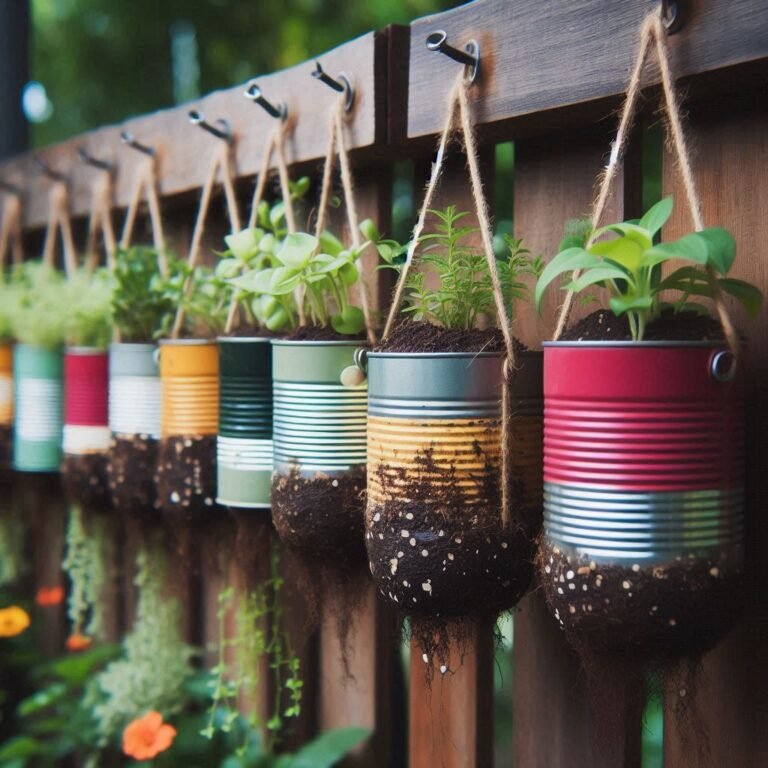Creating a Sustainable Backyard Garden: Raised Gardens and DIY Eco-Friendly Projects
This article may contain affiliate links to trusted partners, which help run this site at no extra cost to you.
The Benefits of Raised Gardens
Raised gardens, also known as raised beds, are a gardening method where soil is enclosed in elevated structures, often made from wood, stone, or other durable materials. These structures offer a myriad of advantages, making them an excellent choice for backyard gardening enthusiasts. One of the primary benefits of raised gardens is improved soil drainage. Unlike traditional ground-level gardens, raised beds allow water to drain more efficiently, preventing waterlogging and root rot, which can be detrimental to plant health.
Another significant advantage is the ease of access they provide for planting and maintenance. The elevated design reduces the need for bending and kneeling, making gardening activities more comfortable and accessible, especially for elderly individuals or those with physical limitations. Moreover, the gardener has better control over soil quality and composition. By filling the beds with a customized soil mix, it becomes easier to create the ideal growing environment for specific plants, enhancing overall plant health and yield.
Raised gardens also have the potential to extend the growing season. The soil in raised beds warms up faster in the spring and retains heat longer into the fall, providing a longer period for planting and harvesting. This feature is particularly beneficial in regions with short growing seasons or unpredictable weather patterns. Additionally, raised gardens offer an effective solution for areas with poor soil conditions, such as heavy clay or sandy soils, by allowing the gardener to bypass the native soil entirely.
Beyond functional benefits, raised gardens contribute to the aesthetic appeal of a backyard. They can be designed to complement any backyard style, from rustic to modern, and can serve as focal points in the landscape. The structured appearance of raised beds adds visual interest and organization, making the garden space more attractive and inviting.
Numerous real-life examples and testimonials highlight the success of raised garden projects. For instance, Jane, a backyard gardening enthusiast from Oregon, transformed her barren backyard into a lush oasis by incorporating raised beds. She found that the improved soil quality and drainage significantly boosted her vegetable yield, and the elevated design made gardening a joy rather than a chore. Such stories inspire others to explore the benefits of raised gardens and consider them as a viable option for their backyard gardening endeavors.
DIY Eco-Friendly Projects for Your Backyard Garden
Creating a sustainable backyard garden involves more than just planting seeds; it encompasses practices that reduce waste, conserve resources, and utilize natural materials. Embracing eco-friendly gardening methods not only benefits the environment but also enhances the health and productivity of your garden. Here are several DIY projects that can help make your backyard garden more sustainable, each complete with step-by-step instructions and tips for success.
Building a Compost Bin
Composting is a fantastic way to recycle kitchen scraps and yard waste into nutrient-rich soil. To build a simple compost bin, you will need wooden pallets, screws, and a drill. Begin by securing four pallets together to form a square, ensuring the structure is stable. Place your compost bin in a shaded area and start adding a balanced mix of green (nitrogen-rich) and brown (carbon-rich) materials. Turn the compost regularly to speed up the decomposition process.
Creating a Rainwater Harvesting System
Conserving water is crucial for sustainable gardening. A rainwater harvesting system can be made using a rain barrel, a downspout diverter, and a mesh screen. Position the rain barrel under a gutter downspout and attach the diverter to channel water into the barrel. Use the mesh screen to keep debris and insects out. Collected rainwater can be used to irrigate your garden, reducing your reliance on municipal water supplies.
Constructing a Raised Garden Bed Using Recycled Materials
Raised garden beds improve soil drainage and make gardening more accessible. To create a raised garden bed from recycled materials, gather old bricks, wooden planks, or cinder blocks. Arrange the materials to form the bed’s perimeter, ensuring the structure is level and secure. Fill the bed with a mix of compost and soil, and plant your chosen crops. Using recycled materials reduces waste and provides a cost-effective solution for raised gardening.
Additional Eco-Friendly Practices
Supporting your sustainable backyard garden involves more than just DIY projects. Consider companion planting to naturally deter pests and improve plant health. Use organic fertilizers to enrich the soil without harmful chemicals. Incorporate native plants to support local wildlife and promote biodiversity. These practices, combined with your eco-friendly projects, will help create a thriving, sustainable backyard garden.




